
Build Your Own Greenhouse
What a tempting idea! As well as protection from plant and veggie eating animals, a greenhouse can mean extending your growing season or even gardening year round - a gardener's ultimate fantasy. But, it can be an ongoing responsibility. One cold night without heat and your plants and seedlings could be goners.

The front "double hung" window is a recycled, (free) side slider which I installed vertically and drilled out some drainage holes at the bottom. Works great but since the bottom pane weighs about 10 pounds, Click on Right Pic for Counterweight System build.
The ground was covered with landscaping paper then a few inches of gravel was tamped on top of it as it was leveled. Two 12' and two 8' 6"X6" posts were laid down without cutting them to any length and therefore leaving the ends, factory sealed. Because the 8' lengths went inside the 12' lengths (and the posts are 5 1/2" wide) the actual size is 12' X 8' 11", (107sq') which is just under the maximum size you can build a structure in Ontario without a building permit - 10m², which is 107.63sq'.
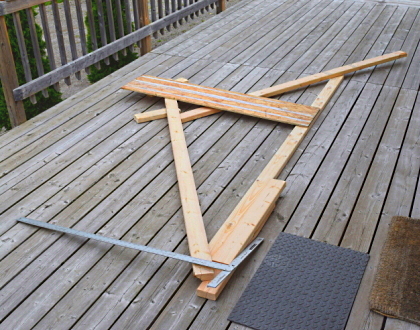
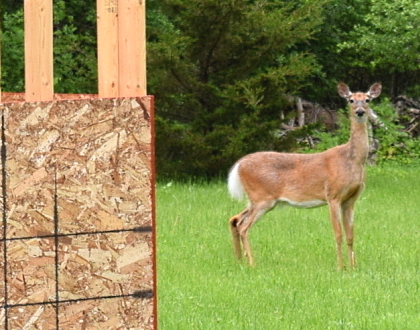






The posts were joined in the corners with deck brackets then four 5' tee bars were hammered into the ground. The inside was filled with gravel and tamped together with the wood frame. Then each tee bar was drilled out with a ¼" hole and fastened to the posts with ¼" lag bolts.
The frame was built using OVE construction with a single header, each truss is directly over each stud with two foot spacing. (See Garage/Shop build in About The Inventor page) The footer is inset 1/2" to allow for a flush fit with the OSB cladding.
The gussets were cut from ~5mm (~3/16") Lauan or poplar/cedar plywood underlayment, then fastened with premium, exterior carpenter's glue and brad nails. I "paint-shopped" the glue bottle into the picture.

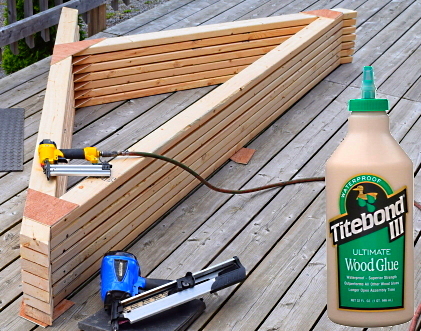
"By blending water and minerals from below with sunlight and CO2 from above, green plants link the earth to the sky. We tend to believe that plants grow out of the soil, but in fact most of their substance comes from the air." Fritjof Capra
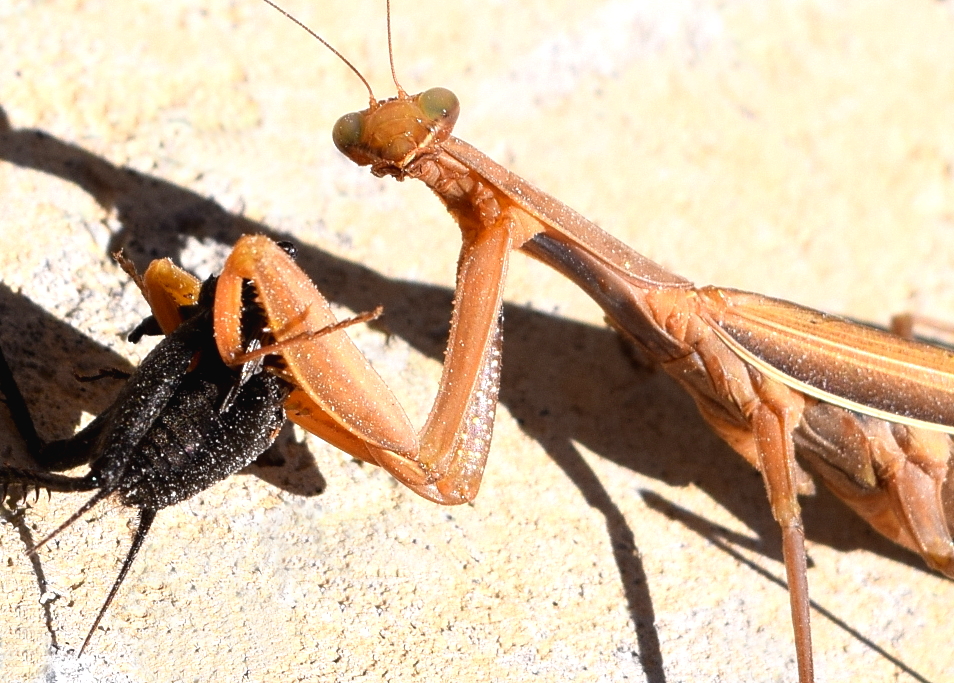
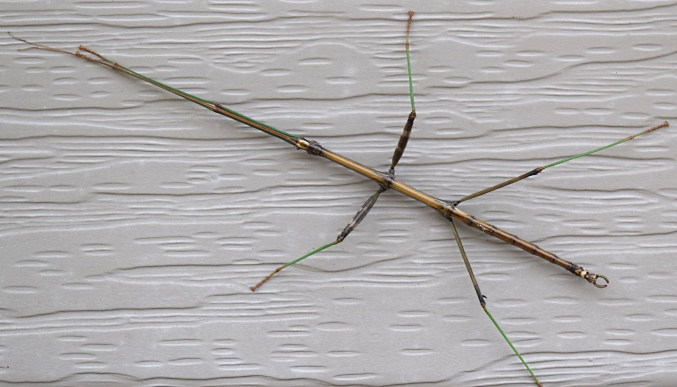
Right, my Praying Mantis, hiding from me. She was almost impossible to spot as I walked by, but much more easily seen in this "cropped" photo. You can tell that she is well fed by her large, swollen abdomen. I had an infestation of crickets some months ago, but as I have observed more Mantises, I have seen fewer and fewer crickets.
I know she is a female because she's larger than the males and has six large abdominal segments as opposed to eight small ones for the males. Count her segments in the inset, bottom right —>
Most insects can't move their heads at all, but some, like the housefly can tilt it slightly left to right. The Mantis is the only insect that can rotate its head 180 degrees in either direction (360 degrees total) and therefore, look directly behind itself.
All Mantises (also, Mantids) have voracious appetites and they will even eat Stick Insects. Both of them make ideal pets, especially for inquisitive, budding young "entomologists".
My Praying Mantis here is not so camouflaged when she is on my foundation wall eating this cricket. (chewing its head off)
My proximity caused her to pause eating and give me this look, but then she carried on, like a glutton, when I moved away.
You can see the cricket's Cerci, the two "spikes" sticking out from its abdomen. They just use them as sensory organs, but in Grasshoppers (who share a common ancestor with crickets) the Cerci are small and used to assist in egg laying.
In earwigs (below) the cerci are very powerful and used as pincers for defense, although they are no match for the Mantis, who will grab and eat them head first. The Mantis eats many other pest insects, including Cockroaches.

These spiders (like most) are not dangerous and only bite if provoked, (i.e. held between two fingers or pressed down while walking on your skin) but it just feels like a pin prick. They usually just run up to the top of their web and hide, or they can vibrate rapidly back and forth in the web, to confuse predators - which also makes them impossible to photograph. Dave's Note: Spiders are not insects, but arachnids. The Arachnida family includes Scorpions, Ticks and even Horseshoe Crabs.
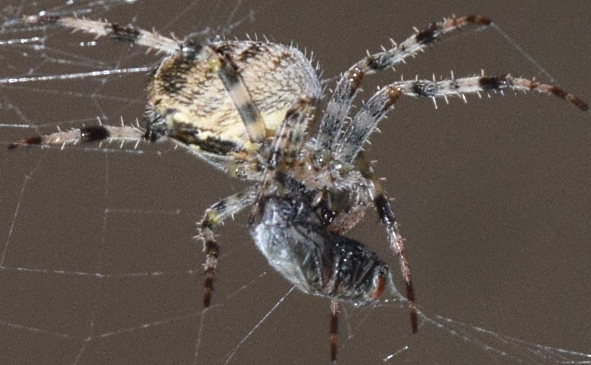


Photographed on my house siding, this Northern Walkingstick is almost invisible when up in the Deciduous Trees where it likes to eat the leaves. Like all insects, it has six legs but this one has her two front legs folded forward tightly beside her antennae. The female here is green and brown but the smaller male is entirely brown and has larger pincers (cerci) to hold onto her while mating, which can last for several days.
The breakoff joint allows the loss of a leg, usually to a predator. The joint seals and the insect usually escapes and starts to re-grow the missing leg. Their predators are songbirds and rodents, but the Praying Mantis will dine on them too.
Robin Chicks, one day old, inside a cedar tree at my front deck. I find that chicks in a nest can be as challenging to photograph as insects, below.
Above, my Mantis out for the hunt, showing off her specialized "spike" weapons on her foreleg. She is looking for larger prey and therefore passes by the tiny Hoverfly hiding on the plant stem. The fly seems to have another even tinier fly on its back and head, but it's too small for me to discern. One difficulty with close-up photography is the narrow depth of field and deciding what part of your subject is to be in focus.
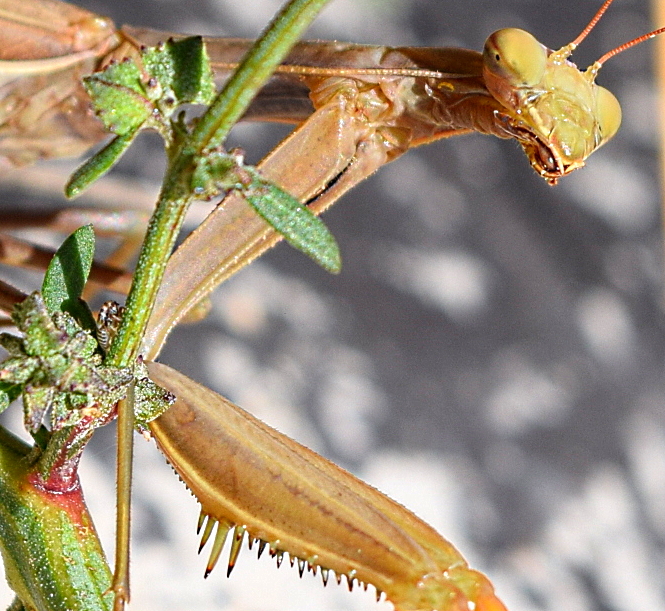

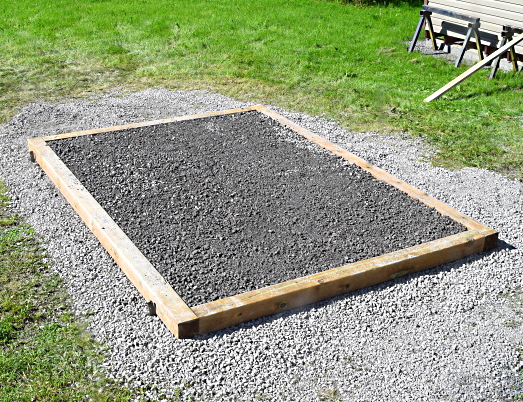

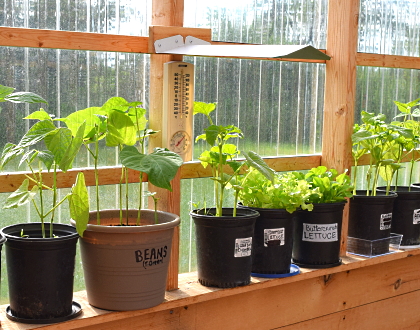
Top hinged roof vent keeps out much unwanted weather even when open. The "heat sensitive" hydraulic powered vent mechanisms use a specially formulated heat expanding liquid wax in the cylinders instead of hydraulic fluid. The vent starts to open at 25C and is fully open at 30C - (86F).
The green onions were bought at the store, the white ends with small roots were cut off and planted in the middle pot. Some of the larger ones are already bigger than the onions they were planted from, and even more scrumptious. Note - right corner of the top new oak shelf.
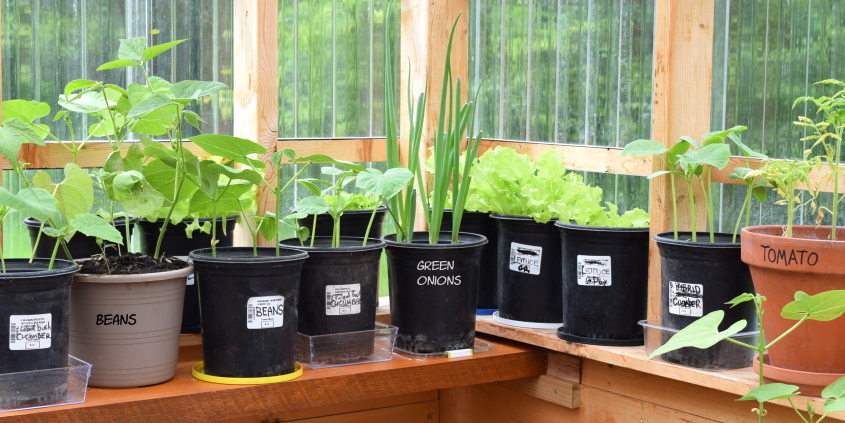
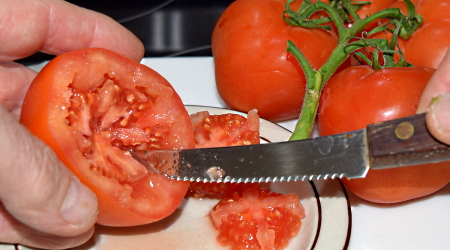
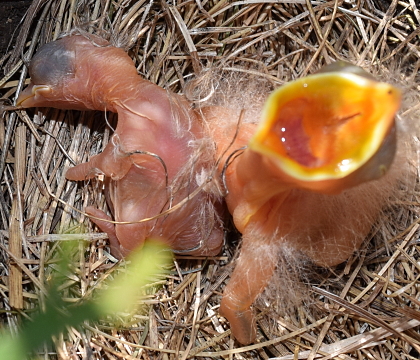
First veggies, end of May 2019, all planted from seeds,
Note - adjustable scaffold used as temporary shelf, see Wheelbarrow Handles under Advanced Tips & Tricks

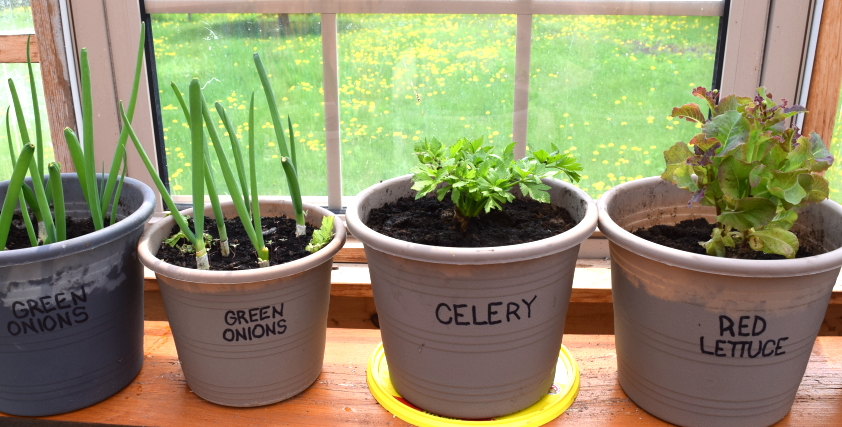
Also, don't throw away the bottom cut ends of your lettuce or celery purchased at the store. Plant them and below shows them a few weeks later.
These photos show how I designed and built my greenhouse.






























